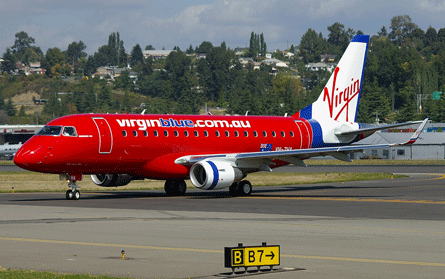Market-changing developments are taking place in Australasia as airlines in Australia and New Zealand confront difficult times, resulting in downsizing after many years of growth.
New competition has created overcapacity just as demand has been falling. This is having a negative effect on yields, at the same time as the Australian dollar has lost 30% of its value over the past half year and some of the country’s airlines have been hurt by losses on fuel hedging contracts.
The list of cutbacks has been growing in recent weeks, with Virgin Blue and smaller SkyAirWorld announcing capacity and job cuts, regional carrier MacAir going into receivership, Qantas slashing capacity growth plans and Skywest recording losses and a drop in passenger numbers.
 |
|---|
“The softening demand and other factors contribute to this being the most volatile operating environment in the history of commercial aviation, Australia included, with domestic fares at 17-year lows and yield impacted accordingly,” says Virgin Blue.
Virgin Blue has taken a beating on the financial markets over the past six months and its market capitalisation has fallen to levels that occasionally make it worth the same as the list price of a new Boeing 777. Some believe this makes it a potential takeover target.
The carrier says it will be removing another 8% of capacity from domestic flying in Australia by 1 May and will be reducing staff levels by up to 400 full-time positions. Senior managers have taken pay cuts of up to 30% and the board is seeing directors’ fees cut by 10%.
The difficulty comes as costs have increased as a result of the launch of long-haul operations under the V Australia name. V Australia has had a rocky start as its original launch dates had to be pushed back to 27 February due to the machinists’ strike at Boeing that delayed the delivery of its first aircraft.
Virgin Blue’s short-haul international arm Pacific Blue is also facing new competition. It expanded into the New Zealand domestic market late in 2007, competing on trunk routes against market leader Air New Zealand and Qantas Airways.
New Zealand is a small market and a notoriously difficult one to compete in, as evidenced by the demise of several airlines over the years. Competition is about to get more intense as Qantas’ low-cost unit Jetstar is about to make a major move into it.
Jetstar will be replacing Qantas on main domestic routes in New Zealand on 10 June and is promising highly competitive fares, which will inevitably bring down yields for all the players.
“We won’t be beaten on price and our low fares will take Jetstar into a price leadership position in domestic New Zealand markets,” vows Jetstar chief executive Bruce Buchanan.
Qantas says the dynamics of the New Zealand domestic and trans-Tasman markets are “unique and particularly in the current environment, we need to be flexible to ensure we remain competitive”.
It adds: “This means applying our two-brand strategy and utilising the right airline, with the right cost base and product, for the right market, to offer competitive, sustainable services.”
Qantas adds that it is making “decisive reductions in capacity” across other parts of its network to cope with continuing drops in traffic. Total capacity in the current six-month period will be reduced by 4% and planned growth in the next financial year starting 1 July will be slashed. Internationally it is dropping some of its destinations.
 |
|---|
| "We are number one choice for customers and that is not a position we will cede." Rob Fyfe, chief executive, Air New Zealand |
“We are the number one choice for customers and that is not a position we will cede,” insists chief executive Rob Fyfe.
“I am confident that Air New Zealand is in one of the strongest positions to weather the current economic climate.”
CAPA is less upbeat, warning that Jetstar’s move into
It adds: “The move is a full frontal attack on the
So what next then for the Australasian market? CAPA suggests the difficult times could force ANZ and Qantas back to the negotiating table, after previous efforts to forge a partnership were rejected by competition authorities.
“The next step could be a return to the competition authorities to get the long-running Qantas/Air New Zealand tie-up squared away,” says CAPA.
Source: Airline Business























